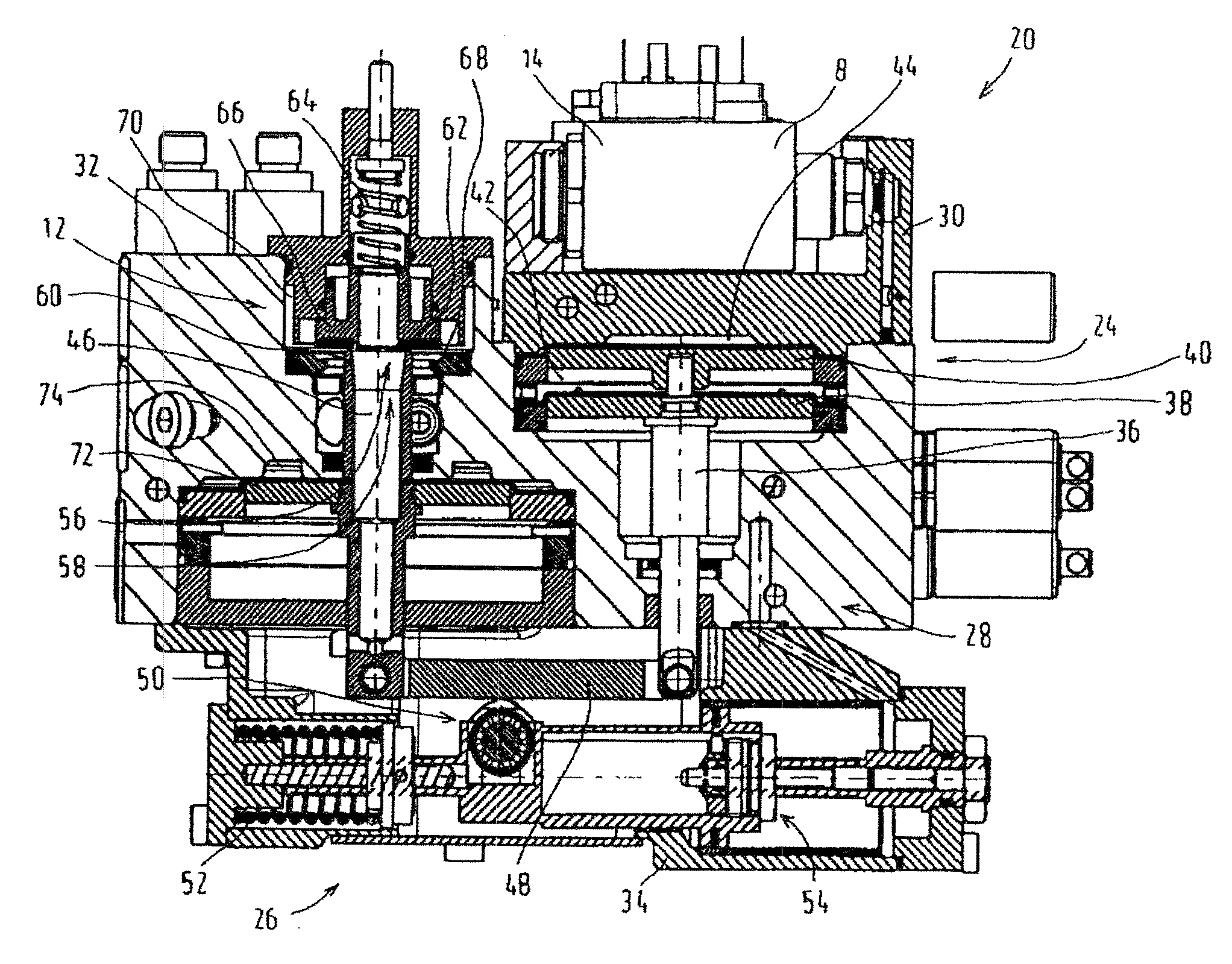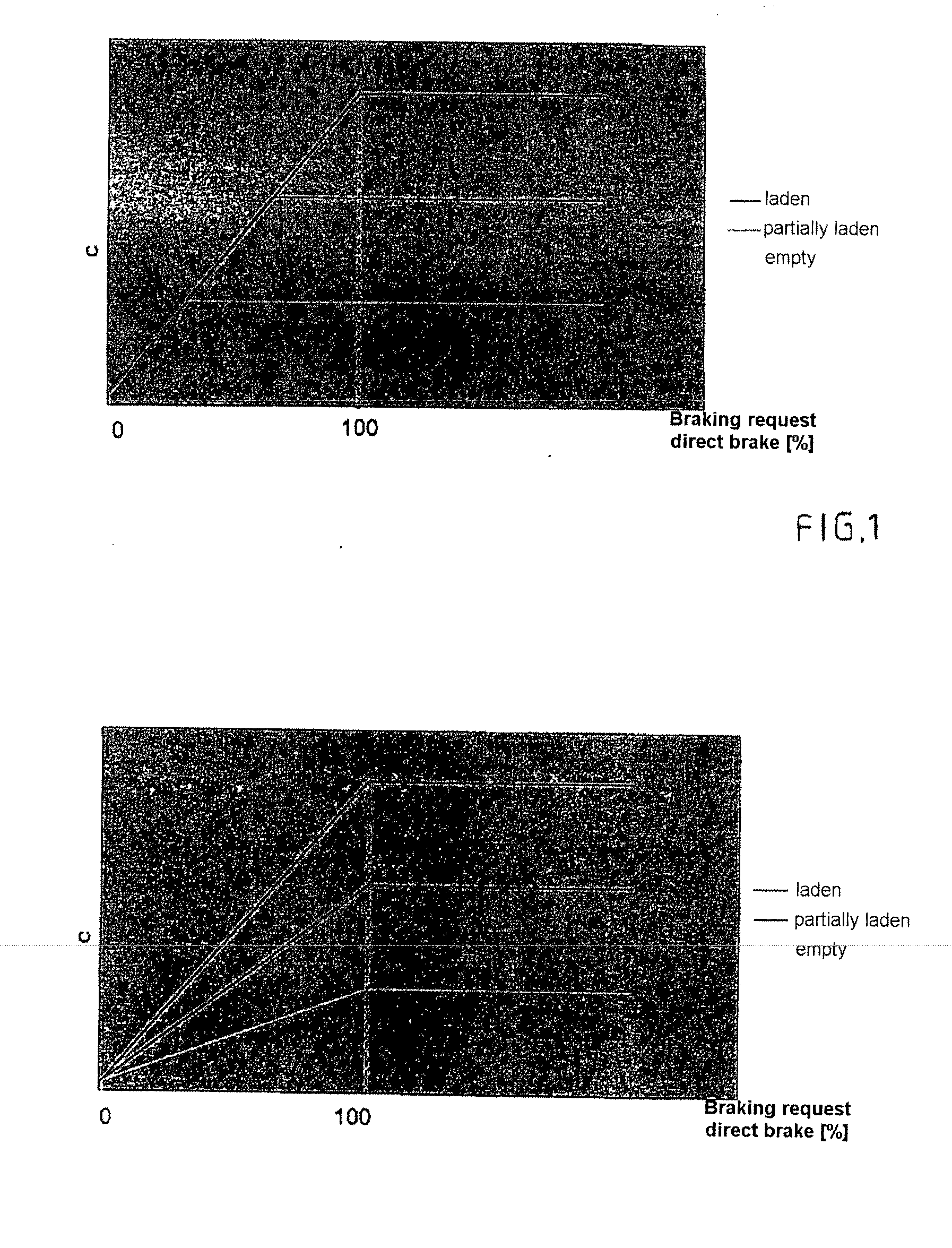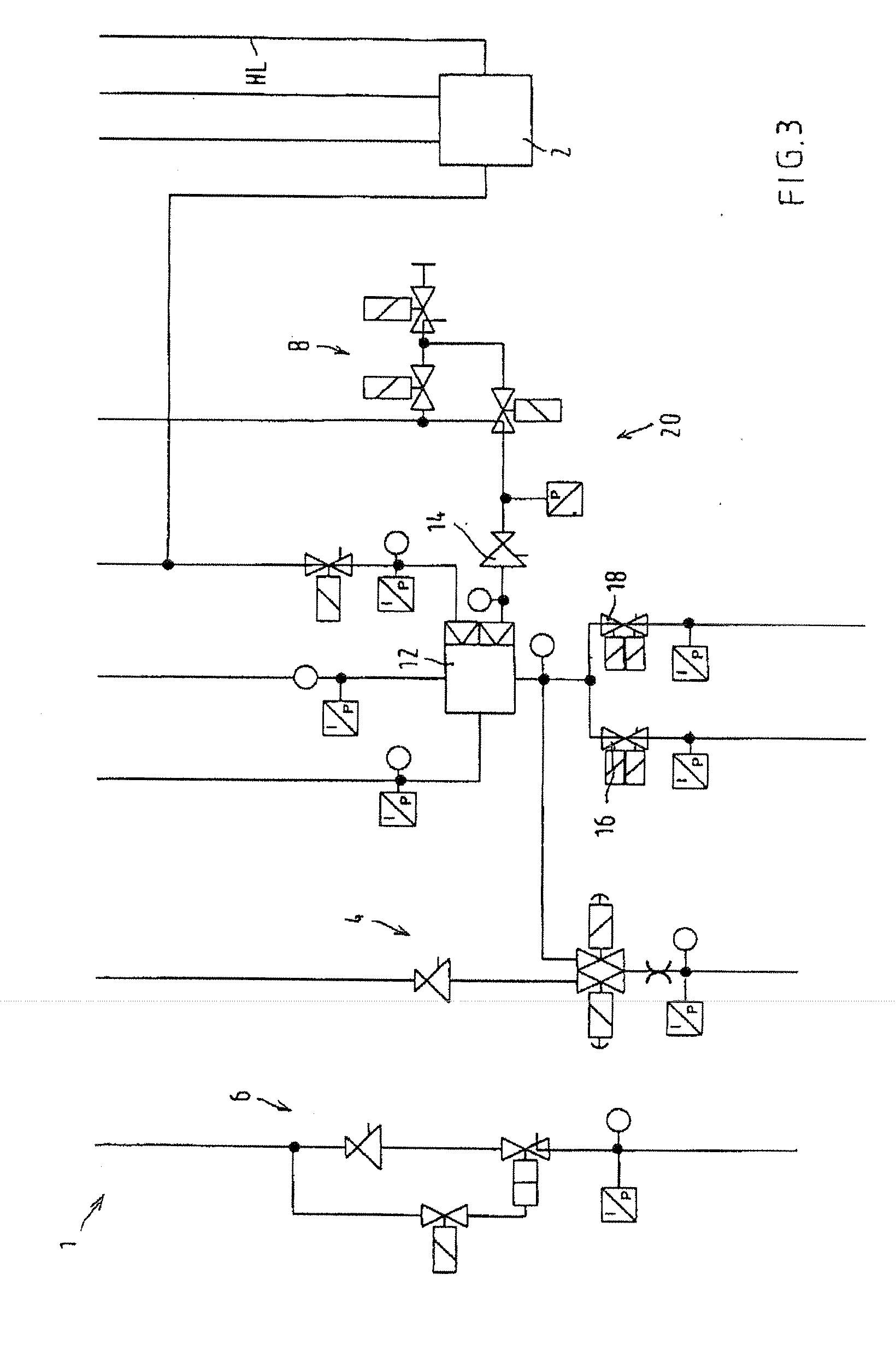Electropneumatic Braking Device of a Rail Vehicle Comprising a Continuous Regulating Range
- Summary
- Abstract
- Description
- Claims
- Application Information
AI Technical Summary
Benefits of technology
Problems solved by technology
Method used
Image
Examples
Embodiment Construction
[0024]FIG. 3 shows a pneumatic diagram of a part 1 of a preferred embodiment of an electropneumatic brake system of a rail vehicle, containing a direct action electropneumatic, microprocessor-controlled brake device and an indirect action compressed-air brake device. This purely pneumatic component is in the form of a load-corrected coupling to an indirectly triggering main air line HL via a control valve 2.
[0025] The rail vehicle has a plurality of bogies, each bogie being controlled separately by a compact control module CCM so that for each bogie it is possible to form an individual brake cylinder pressure for one or more brake cylinders. Consequently, a compact control module CCM which has the following functions is provided per bogie: [0026] electronic processing of the brake signals; [0027] generation of the brake cylinder pressure for the direct brake device; [0028] load correction; [0029] antiskid control; [0030] monitoring of the parking brake actuation; [0031] magnetic ra...
PUM
 Login to View More
Login to View More Abstract
Description
Claims
Application Information
 Login to View More
Login to View More - R&D
- Intellectual Property
- Life Sciences
- Materials
- Tech Scout
- Unparalleled Data Quality
- Higher Quality Content
- 60% Fewer Hallucinations
Browse by: Latest US Patents, China's latest patents, Technical Efficacy Thesaurus, Application Domain, Technology Topic, Popular Technical Reports.
© 2025 PatSnap. All rights reserved.Legal|Privacy policy|Modern Slavery Act Transparency Statement|Sitemap|About US| Contact US: help@patsnap.com



